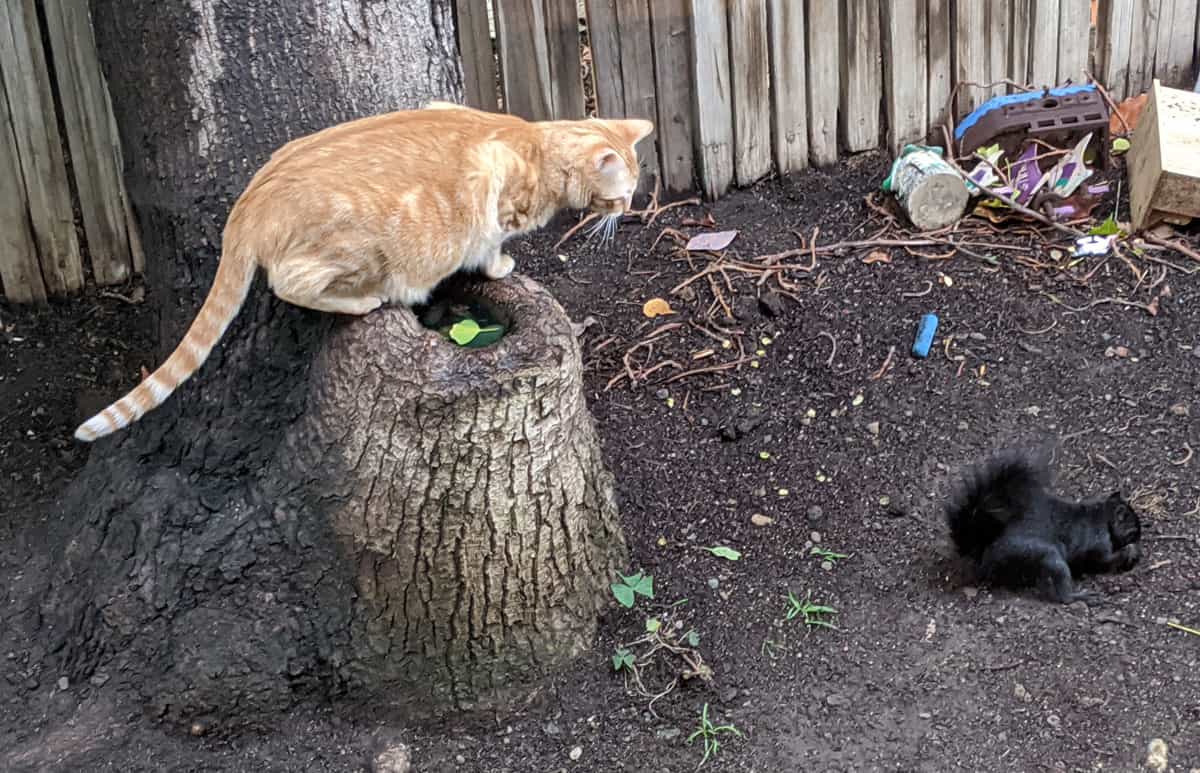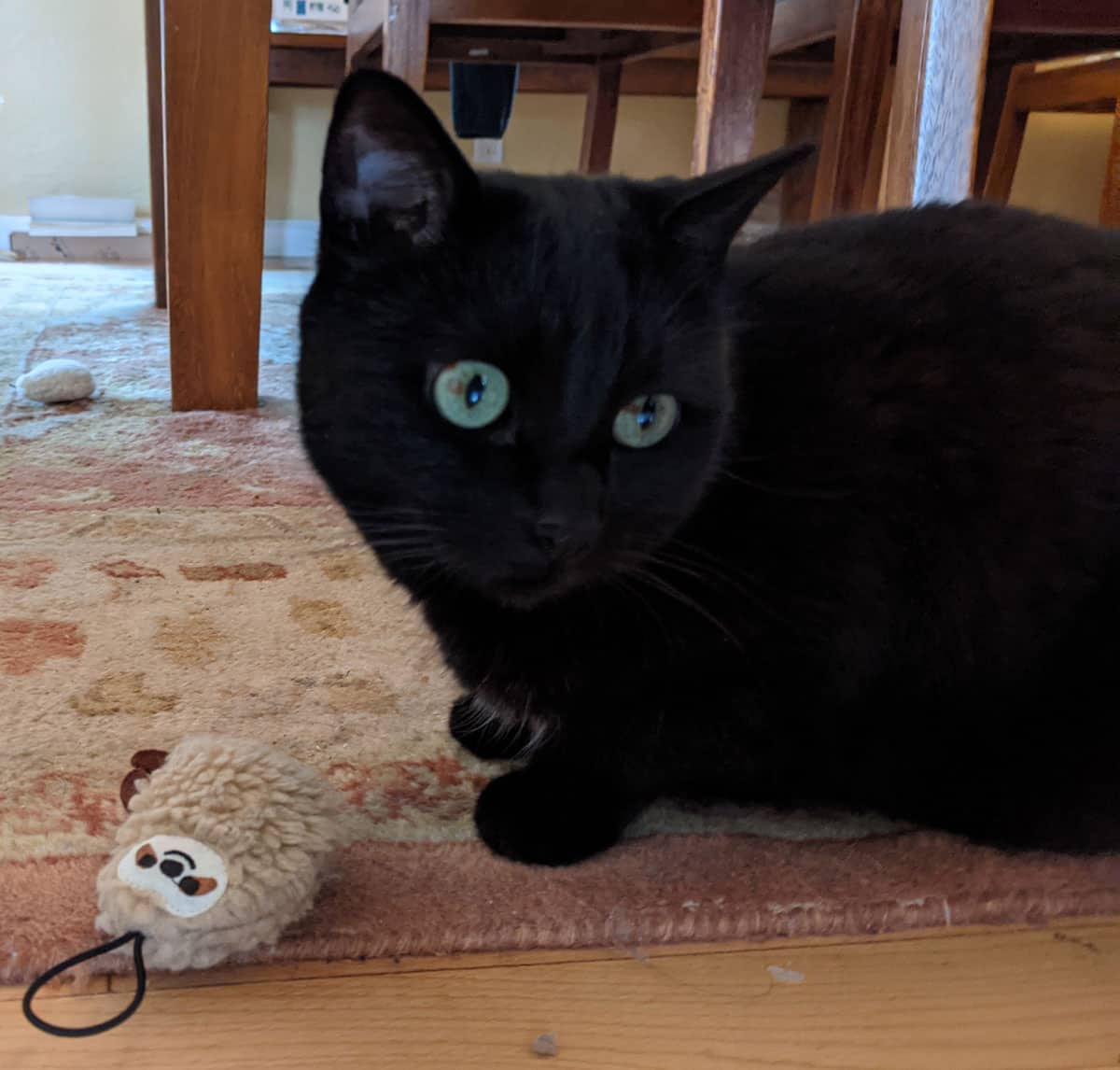Cats are voracious hunters. Their strong prey drive makes for fun playtime with a string but it can also have a devastating impact on wildlife.
Cats who are allowed outdoors often hunt down small birds, rodents, and reptiles. Even the well-fed house cat can spend hours at a time lying in wait for prey.
What is the Impact of House Cats on Wildlife?
Various studies have looked at the toll that outdoor cats exact on wildlife.
One study in 2013 that looked at the impact on wildlife in the United States estimated that outdoors cats, particularly feral cats, kill 1.3–4.0 billion birds and 6.3–22.3 billion mammals each year. (Related: Safety is the Biggest Reason People Keep Their Cats Indoors)

A more recent study (2021) looked at the impact of free-ranging cats on wildlife in China and estimated that cats are responsible for the deaths of 1.61-4.95 billion invertebrates, 1.61 -3.58 billion fishes, 1.13-3.82 billion amphibians, 1.48-4.31 billion reptiles, 2.69-5.52 billion birds, and 3.61-9.80 billion mammals each year.
These and other studies have all similarly found that the death toll on wildlife by free-ranging cats is extremely high. A study last year tracked the movement of feral and domestic cats and their prey found that cats have a “two- to 10-time larger impact on wildlife than wild predators.”
The antidote, at least for house cats, is to keep them indoors or restricted to a contained outdoor space like a catio where they are prevented from hunting wildlife. Many pet owners still continue to give their cats free-range. The debate between the merits of allowing cats outdoors and conservation concerns continues to this day.
How Does Play and More Protein Reduce Hunting by Cats?
Researchers from the University of Exeter wanted to explore what strategies limited hunting by free-range cats. The study involved 355 cats in 219 households in south-west England over a two-week period.
The study looked at two aspects of a cat’s daily lives: food and play. Martina Cecchetti, a PhD student who conducted the study, hypothesized that “Some cat foods contain protein from plant sources such as soy, and it is possible that despite forming a ‘complete diet’ these foods leave some cats deficient in one or more micronutrients -prompting them to hunt.”

In addition to tracking the hunting behavior of cats fed a more meat-based diet, the study also looked at owners who played with their cats using a string or stick with a feather attached for 5-10 minutes a day. A toy mouse was given after the playtime to mimic catching a prey.
Overall, the study found that both strategies had an effect on house much prey the cats in the study brought home:
The study found that introducing a premium commercial food where proteins came from meat reduced the number of prey animals cats brought home by 36%, and also that five to ten minutes of daily play with an owner resulted in a 25% reduction.
The study was pretty small and it also looked at the effect of preventative devices such as outfitting cats with collars with bells or a colorful bird alerting collar (BirdsBeSafe collar) on hunting as well. All of the strategies had some effect on hunting behavior among cats to varying degrees.
The Study
Cecchetti, M., Crowley, S. L., Goodwin, C. E., & McDonald, R. A. (2021). Provision of High Meat Content Food and Object Play Reduce Predation of Wild Animals by Domestic Cats Felis catus. Current Biology. https://doi.org/10.1016/j.cub.2020.12.044
Play and meaty food reduce hunting by cats. (n.d.). University of Exeter. https://news-archive.exeter.ac.uk/homepage/title_841913_en.html#:~:text=The%20new%20study%20–%20by%20the,resulted%20in%20a%2025%25%20reduction.
More Cat Research
- Cats Can Learn the Names of Their Feline Housemates
- Cats Use Sounds to Track Where You are in the House
- Cat Ownership Linked to a Positive Effect on Brain Health







